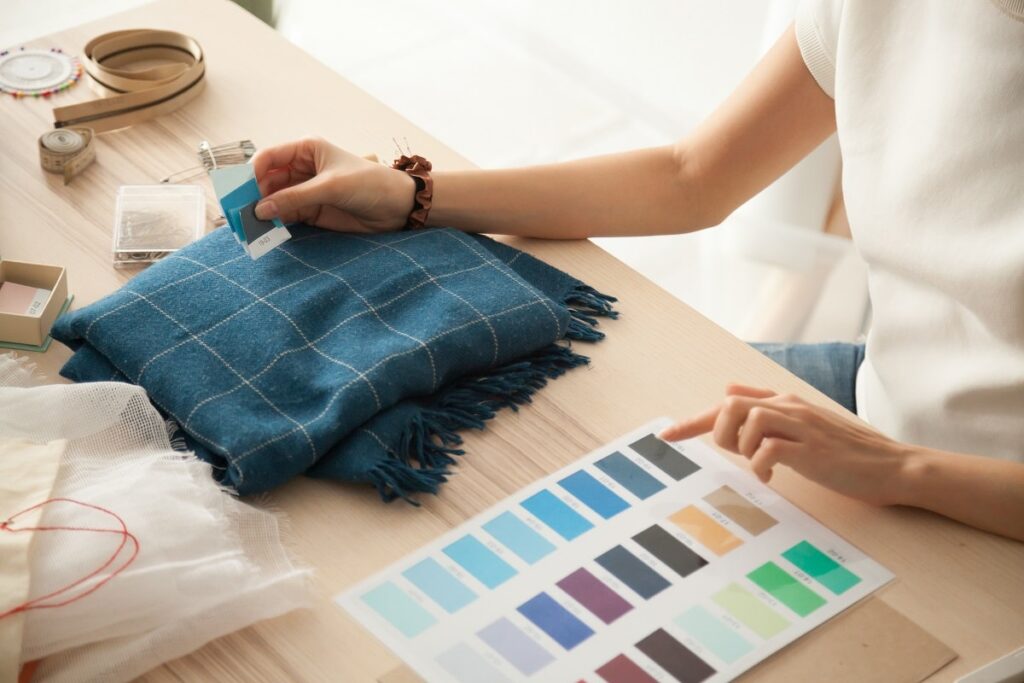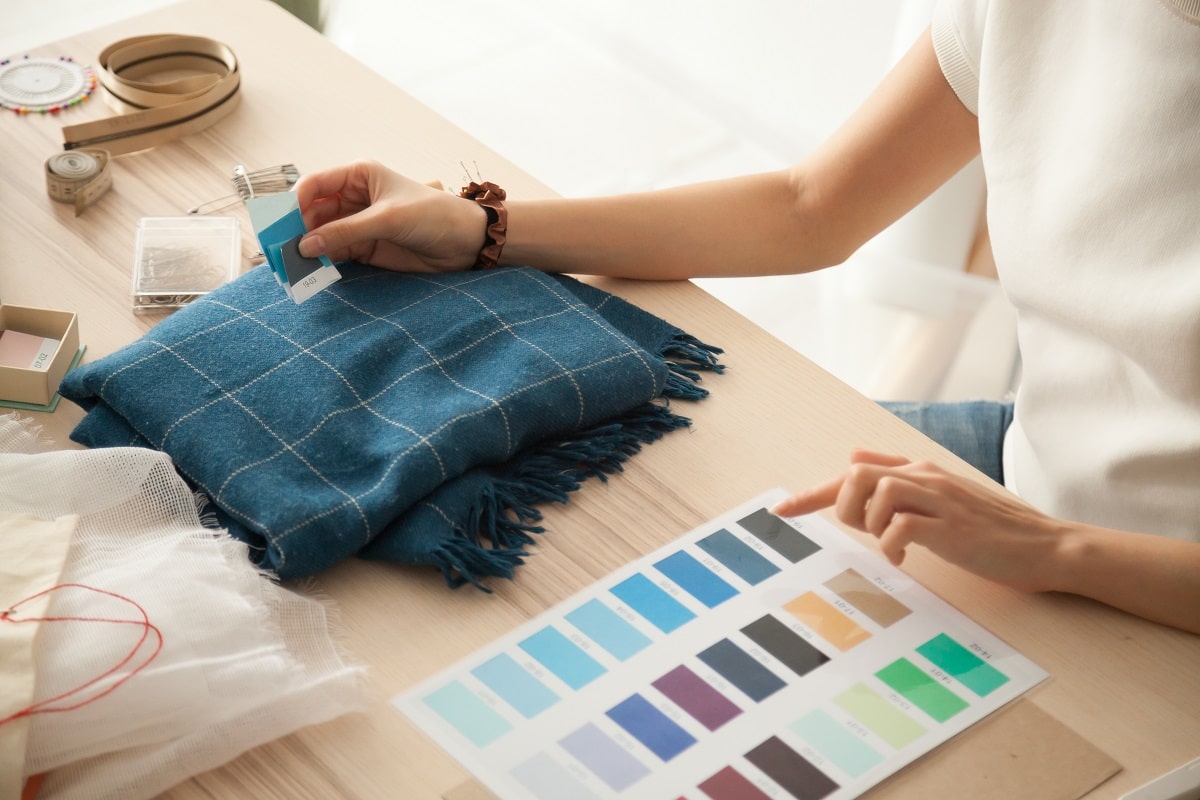The textile design industry plays a vital role in shaping fashion by creating the fabrics, prints, and textures that define every garment. From sustainable materials to digital printing innovations, textile designers combine creativity and technology to bring visual appeal and functionality to clothing. Understanding the top jobs and current trends in textile design is essential for those aspiring to build a career in this ever-evolving field.
Top 10 Jobs in Textile Design for Fashion
A career in textile design offers a variety of exciting opportunities across creative, technical, and production roles. Whether you’re passionate about creating patterns, improving fabric performance, or exploring sustainable materials, there’s a career path that aligns with your skills and interests. Here are the top 10 jobs shaping the textile design landscape today.
1. Textile Designer
Responsible for creating fabric designs, patterns, and color schemes used in fashion collections. Textile designers collaborate with fashion houses to ensure fabric aesthetics align with brand identity.
2. Print Designer
Specializes in creating prints for apparel and accessories. They use both hand-drawn and digital methods to develop motifs and repeat patterns that appeal to different market segments.
3. Fabric Technologist
Focuses on the technical properties of fabrics, such as strength, texture, and performance. Fabric technologists work to enhance material durability and sustainability.
4. Surface Pattern Designer
Develops unique surface designs for textiles, often incorporating embroidery, beading, or texture manipulation to create distinctive fashion pieces.
5. Textile Product Developer
Bridges the gap between design and production. They oversee the creation of new textile products from concept to manufacturing while ensuring quality and cost efficiency.
6. Colorist
Expert in color trends and combinations, colorists ensure textile palettes stay in tune with seasonal fashion trends and consumer preferences.
7. Trend Forecaster
Analyzes market data and cultural influences to predict upcoming trends in textile design, helping brands plan ahead for color, pattern, and fabric direction.
8. Sustainable Textile Specialist
Focuses on eco-friendly materials, ethical sourcing, and innovative production techniques that minimize environmental impact. This role is key in shaping a greener fashion future.
9. Textile Illustrator
Creates detailed visual representations of textile concepts for marketing, production, or client presentations. They bring fabric ideas to life before they’re physically produced.
10. Textile Production Manager
Oversees fabric manufacturing processes, ensuring efficiency, quality control, and timely delivery from mills to fashion brands.
Emerging Trends in Textile Design
The textile design industry is undergoing an exciting transformation driven by technology, sustainability, and creativity. From smart fabrics and digital printing to sustainable materials and cultural fusion, these trends are reshaping how designers approach fabric creation. Staying ahead of these innovations allows fashion professionals to remain relevant, forward-thinking, and connected to the evolving needs of consumers and the planet.
1. Sustainable and Recycled Materials
Designers are increasingly using organic cotton, bamboo fibers, and recycled polyester to create eco-conscious textiles.
2. Digital Fabric Printing
Digital printing technology allows for faster production, greater customization, and intricate designs with minimal waste.
3. Smart Textiles
Integration of technology into fabrics, such as temperature regulation, LED integration, and wearable sensors, is revolutionizing performance wear.
4. Handcrafted Revival
Artisanal weaving, dyeing, and embroidery techniques are making a comeback, blending heritage craftsmanship with modern fashion.
5. Biodegradable Textiles
Innovations in fabric chemistry are leading to materials that naturally decompose, reducing long-term waste.
6. 3D Knitting and Fabric Simulation
Advanced software enables 3D prototyping and knitting, streamlining sample production and reducing resource use.
7. Nature-Inspired Design
Organic patterns, botanical motifs, and natural textures continue to influence modern textile aesthetics.
8. Digital Collaboration Platforms
Designers now use cloud-based tools to collaborate globally, improving efficiency in textile development and approval.
9. Minimal Waste Fabric Production
Zero-waste pattern cutting and fabric optimization are becoming standard practices in sustainable textile design.
10. AI-Driven Textile Innovation
Artificial intelligence helps predict design trends, optimize production, and inspire new creative directions in textile development.
Conclusion
Textile design lies at the heart of fashion innovation, blending artistry, technology, and sustainability to create the fabrics that define modern style. As the industry evolves, professionals who embrace new tools, eco-friendly materials, and global trends will lead the way in shaping a more responsible and creative fashion future. Whether you’re an aspiring designer or a seasoned expert, mastering textile design opens endless possibilities for growth and impact in the fashion world.
Key Takeaways:
- Mastery of textile design connects creativity, technology, and sustainability — essential for shaping modern fashion.
- The industry offers diverse roles, from creative design to technical development and production management.
- Sustainability is now a core driver — designers increasingly use recycled, organic, and biodegradable materials.
- Digital tools like CAD, 3D knitting, and AI are revolutionizing textile design speed, precision, and innovation.
- Collaboration across global digital platforms enhances communication and efficiency in textile development.
- The revival of handcrafted and artisanal techniques reflects growing appreciation for cultural heritage and uniqueness.
- Smart textiles and fabric technologies are expanding fashion’s functionality beyond aesthetics.
- Zero-waste production and circular design principles are becoming industry standards for eco-responsibility.
- Staying adaptable to emerging trends gives textile professionals a competitive edge in the evolving fashion landscape.
For those looking to delve deeper into the world of textile design for fashion and enhance their skills, consider exploring the Parsons Fashion Industry Essentials online course and certificate program offered by Yellowbrick. This comprehensive program can provide valuable insights and practical experience to help you succeed in the dynamic and creative realm of fashion.








